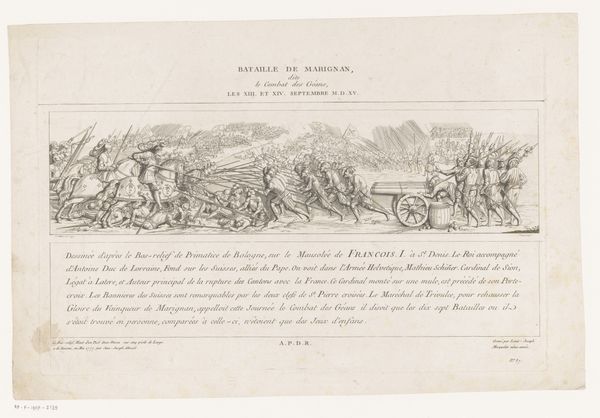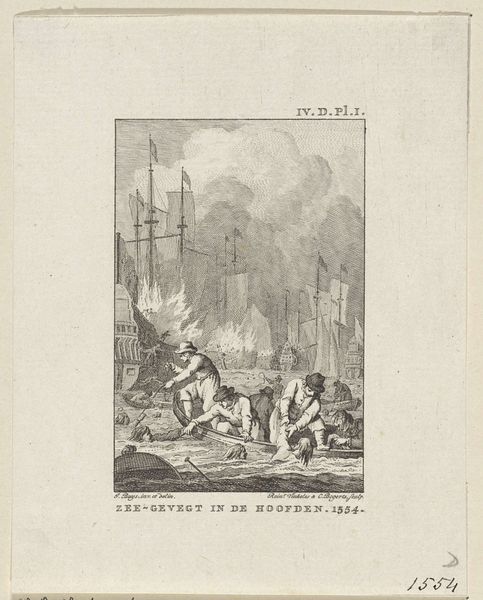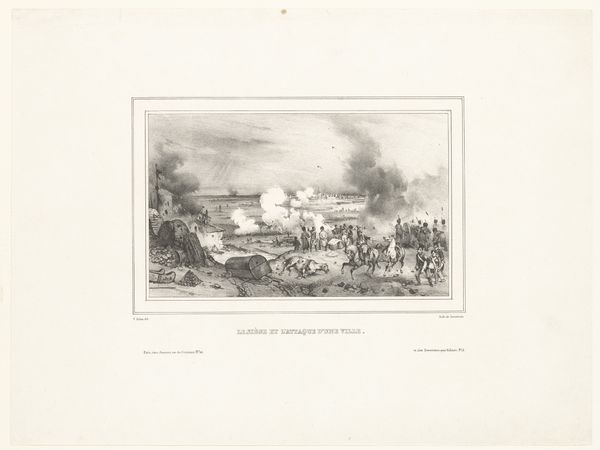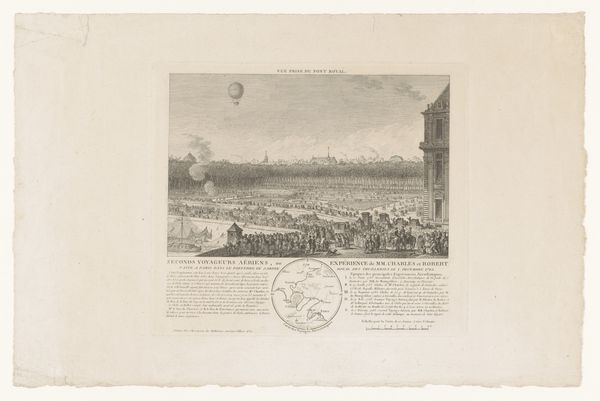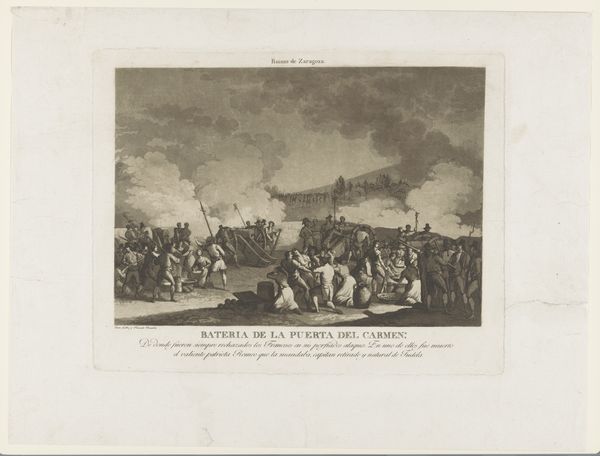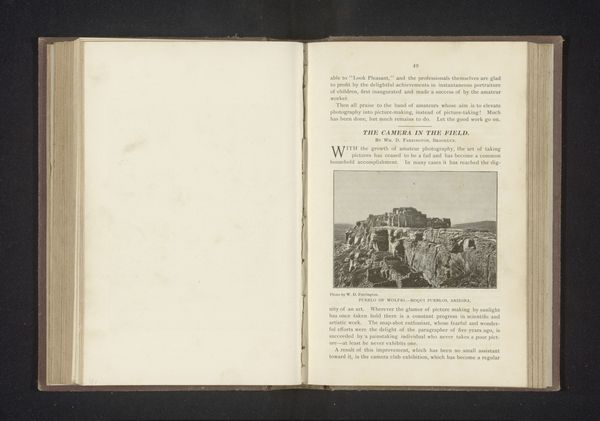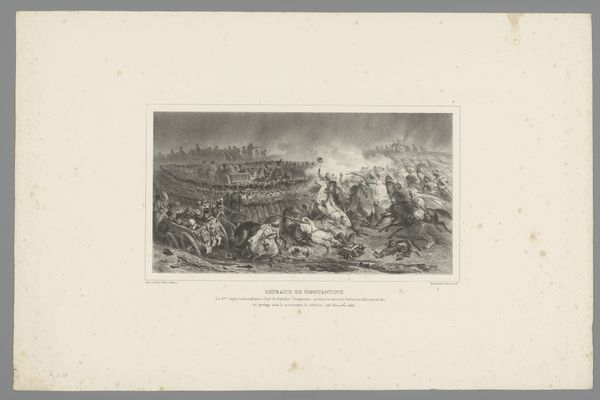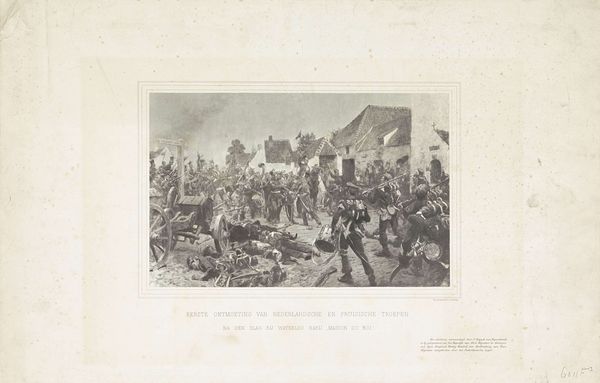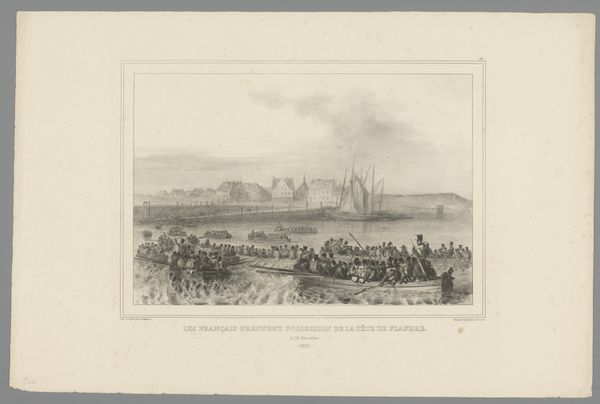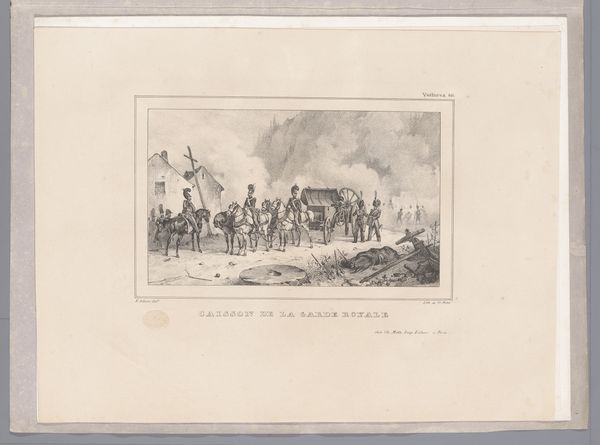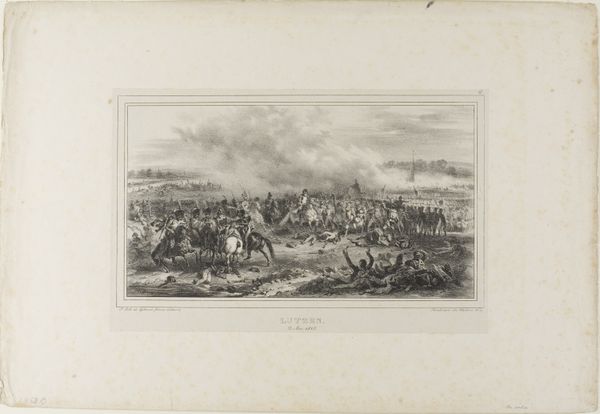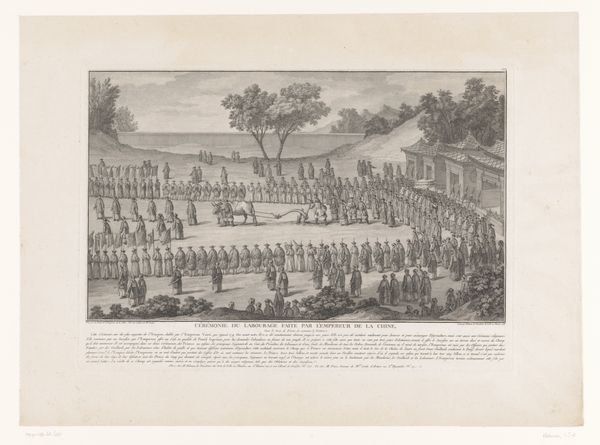
print, engraving
neoclacissism
landscape
history-painting
engraving
Dimensions: height 281 mm, width 210 mm
Copyright: Rijks Museum: Open Domain
This print, titled "Slag bij Wagram, 1809", was made by François Louis Couché in the early 19th century. It's an engraving, a process that involves meticulously cutting lines into a metal plate, applying ink, and then pressing paper against it. Engraving, unlike painting, is a reproductive medium. It allows for the widespread dissemination of images. In Couché's time, this was crucial for shaping public opinion. Consider the labor involved: the engraver, likely working under pressure, translated the depicted battle into a readily consumable image. Notice how the stark contrast between black and white emphasizes the chaos of war. The lines create texture, from the smoke-filled sky to the soldiers' uniforms, and the weight of history. The image's form, defined by the engraved lines, is a testament to the skilled craftsmanship of the printmaker. Ultimately, this print is more than just a depiction of a battle; it’s a product of labor, politics, and consumption. It invites us to consider the social context in which it was made and distributed.
Comments
No comments
Be the first to comment and join the conversation on the ultimate creative platform.
